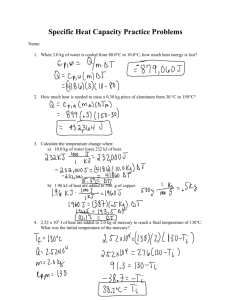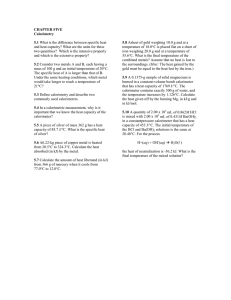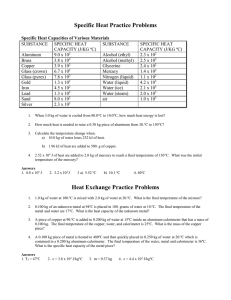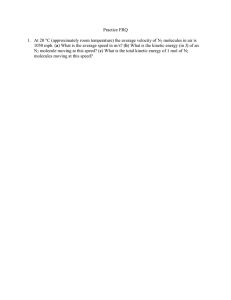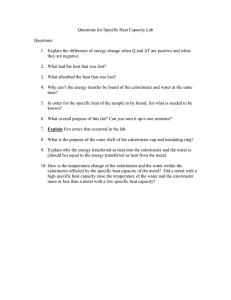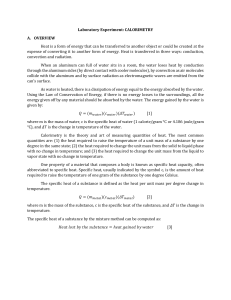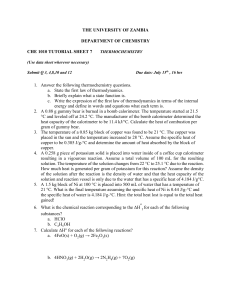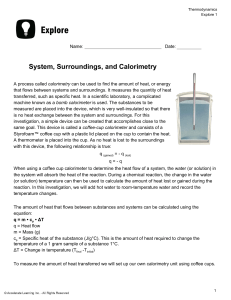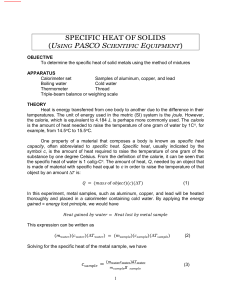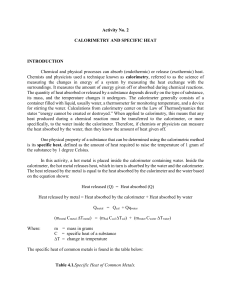Thermal Physics Test 2015
advertisement
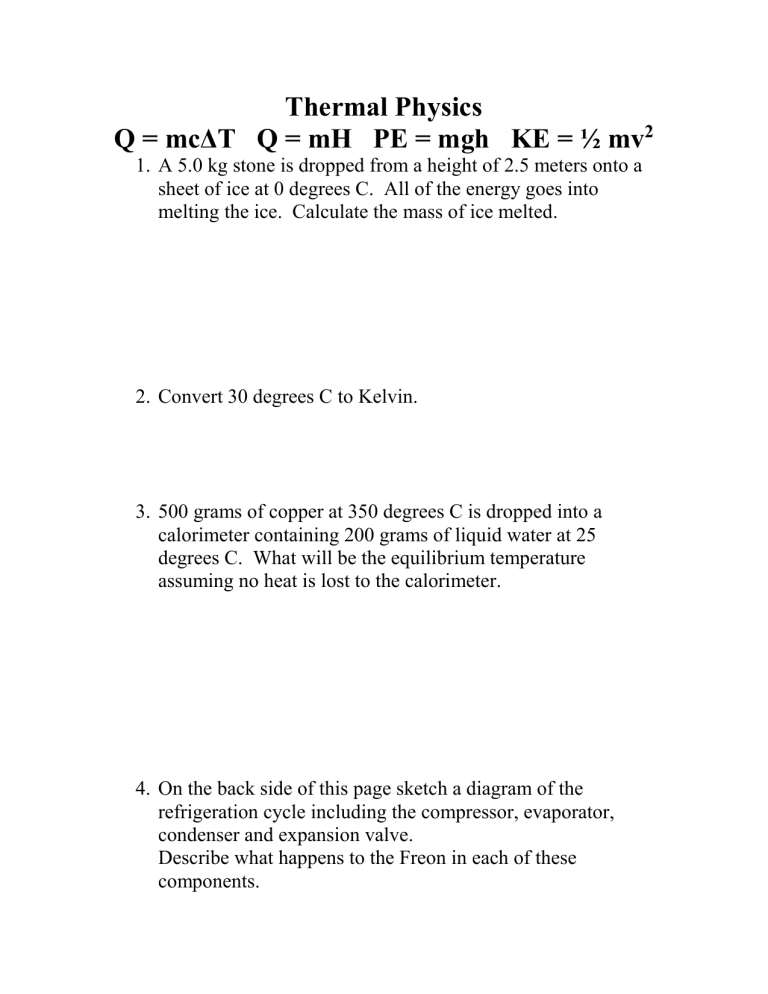
Thermal Physics Q = mcΔT Q = mH PE = mgh KE = ½ mv2 1. A 5.0 kg stone is dropped from a height of 2.5 meters onto a sheet of ice at 0 degrees C. All of the energy goes into melting the ice. Calculate the mass of ice melted. 2. Convert 30 degrees C to Kelvin. 3. 500 grams of copper at 350 degrees C is dropped into a calorimeter containing 200 grams of liquid water at 25 degrees C. What will be the equilibrium temperature assuming no heat is lost to the calorimeter. 4. On the back side of this page sketch a diagram of the refrigeration cycle including the compressor, evaporator, condenser and expansion valve. Describe what happens to the Freon in each of these components. 5. Fill in the following terms: temperature, kinetic energy, potential energy, latent heat, specific heat, first law, second law, conduction, convection and radiation. In the calorimeter situation described in question 3 the calorimeter isolates the copper and water. It prevents ___________ by having a vacuum (no air) between the inner and outer layer of metal. ___________ is contained by using shiny metal for the inside surface. Due to the _________ of thermodynamics we can assume that all of the heat flowing out of the copper goes into the water. This will happen because we know that heat will flow from high __________to low due to the __________ of thermodynamics. Some heat will be transferred through _________ due to the movement of hot and cold water. The energy transfer in this process will be _______ not _________because no phase change occurs. The _________ will increase but the _________will remain the same.
